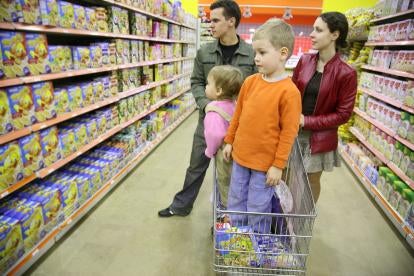-
USDA’s Economic Research Service (ERS) recently released results of a study examining the influence of foodstore access on grocery shopping and food spending. According to the study’s authors, researchers have taken the position that poor access to food retailers selling a wide range of healthy and affordable foods leads to poorer diet and diet-related health problems. And lack of access to stores such as supermarkets may thus mean that households rely more heavily on nearby retailers, such as convenience stores or fast-food restaurants, which do not typically offer a wide variety of healthful foods.
-
The study found that six percent of U.S. households are access-burdened: they do not use their own vehicle to travel to the store for groceries and live more than 0.5 mile from the nearest SNAP-authorized supermarket or superstore (SM/SS). Additional highlights of the study’s findings include:
-
Seventy-seven percent of access-burdened households reported a shopping event at a supermarket, superstore, large grocery store, or warehouse store during the survey week compared to 87 percent for households with sufficient access. Of those who visited these large stores during the survey week, sufficient-access households had 2.8 shopping events at such a store, while access-burdened households averaged 2.4 shopping events; and
-
Although they average fewer trips, access-burdened households spend almost the same percentage of their weekly food expenditures at large stores as households with sufficient access—57 percent of total spending for access-burdened households and 58 percent for sufficient-access households.
-
The per capita spending of access-burdened households at such stores is slightly lower—$28.77 on average for the survey week compared with $29.97 for households with sufficient access.
-
-
The report’s authors noted that these findings suggest that access-burdened households overcome limited food retail options to spend similarly to sufficient-access households at large stores.
New USDA Study Explores Influence of Foodstore Access on Grocery Shopping and Food Spending
Thursday, November 2, 2017



 i
i


